*NURSING > QUESTIONS & ANSWERS > Fall 2019, Patho Exam 2 Review (All)
Fall 2019, Patho Exam 2 Review
Document Content and Description Below
Fall 2019, Patho Exam 2 Review WEEK 4 – NERVOUS SYSTEM A. Nervous System a. What makes up the autonomic nervoussystem? i. The sympathetic and parasympathetic nervous systems ii. What isthe para... sympathetic nervoussystem? 1. It conserves energy and the body’s resources 2. “Rest and Digest” iii. What isthe sympathetic nervoussystem? 1. Responds to stress by preparing the body to defend itself 2. “Fight or Flight” 3. How does this happen (5)? a. Catecholaminesreleased – epinephrine b. Mobilizes energy stores and increases blood glucose and decreases release of insulin c. Redistributes blood flow and increases muscle perfusion d. Increases diameter of bronchioles in the lungs e. Decreases peristalsis of the GI tract and skin B. Primary Brain Injury a. How are primary brain injuries classified? i. Focal or diffuse b. What are focal brain injuries? i. Specific, grossly observable brain lesions that occur in a precise location ii. Ex: epidural hemorrhage,subdural hemorrhage c. What are diffuse brain injuries? i. Also called multifocal injuries ii. Includes brain injuries due to hypoxia, meningitis, encephalitis, and damage to blood vessels d. What effect doesswelling have after a traumatic brain injury (TBI)? i. Can lead to dangerousincreases in intracranial pressure ii. REMEMBER: the brain is within a limited space, and increased pressure can cause collateral dysfunction 1. Ex: neurogenic diabetes insipidus – ADH notsecreted thus polyuria C. Autonomic Hyperreflexia a. Who is most likely affected by autonomic hyperreflexia? i. Patients that have lesions at the T5-6 level or above b. What is autonomic hyperreflexia characterized by (7)? i. Paroxysmal hypertension (up to 300mm Hg systolic) ii. Pounding headache iii. Blurred vision iv. Sweating above the lesion level with flushing ofskin 1. Why doesthis occur? a. The hypothalamus is unable to regulate body heat because of sympathetic nervous system damage v. Piloerection vi. Nasal congestion vii. Bradycardia (30-40bpm) D. Delirium and Dementia a. Delirium2 i. What age does delirium occur? 1. Usually older ii. What is the onset? 1. Acute – most common during hospitalizations iii. Are there any associated conditions(9)? 1. UTI 2. Thyroid disorders 3. Hypoxia 4. Hypoglycemia 5. Toxicity 6. Fluid-electrolyte imbalance 7. Renal insufficiency 8. Trauma 9. Multiple medications iv. What isthe course? 1. Fluctuating; remits with treatment v. What isthe duration? 1. Hoursto weeks vi. Howisthe patient’s attention? 1. Impaired vii. How istheir sleep-wake cycle? 1. Disrupted viii. How istheir alertness and orientation? 1. Impaired ix. What istheir behavior like? 1. Agitated, withdrawn/depressed x. What istheirspeech like? 1. Incoherent 2. Can be rapid orslowed xi. What are their thoughtslike? 1. Disorganized with delusions xii. What are their perceptionslike? 1. Hallucinations/illusions b. Dementia i. What age does dementia occur? 1. Usually older ii. What is the onset? 1. Usually insidious 2. Acute in some cases ofstrokes/trauma iii. Are there any associated conditions(9)? 1. May have no other conditions 2. Brain trauma iv. What isthe course? 1. Chronic slow decline v. What isthe duration? 1. Months to years vi. How isthe patient’s attention? 1. Intact early3 2. Often impaired late vii. How istheir sleep-wake cycle? 1. Usually normal or fragmented viii. How is their alertness? 1. Normal ix. How istheir orientation? 1. Intact early 2. Impaired late x. What istheir behavior like? 1. Intact early xi. What istheirspeech like? 1. Word-finding problems xii. What are their thoughtslike? 1. impoverished xiii. What are their perceptionslike? 1. Usually intact early E. Alzheimer’s Disease a. What is Alzheimer’s Disease i. The leading cause of dementia ii. One of the most common causes ofsevere cognitive dysfunction in older adults iii. Late onset causes about 90% b. What are risk factors of Alzheimer’s? i. Greatest risk factors are age and family history ii. Other risk factors: diabetes, hypertension, hyperlipidemia, obesity,smoking, depression, cognitive inactivity orlow education attainment, female gender, estrogen deficit at the time of menopause, physical inactivity, head trauma, elevated serum homocysteine and cholesterol levels, oxidative stress, and neuroinflammation [Show More]
Last updated: 1 year ago
Preview 1 out of 20 pages

Reviews( 0 )
Document information
Connected school, study & course
About the document
Uploaded On
Jul 22, 2021
Number of pages
20
Written in
Additional information
This document has been written for:
Uploaded
Jul 22, 2021
Downloads
0
Views
29

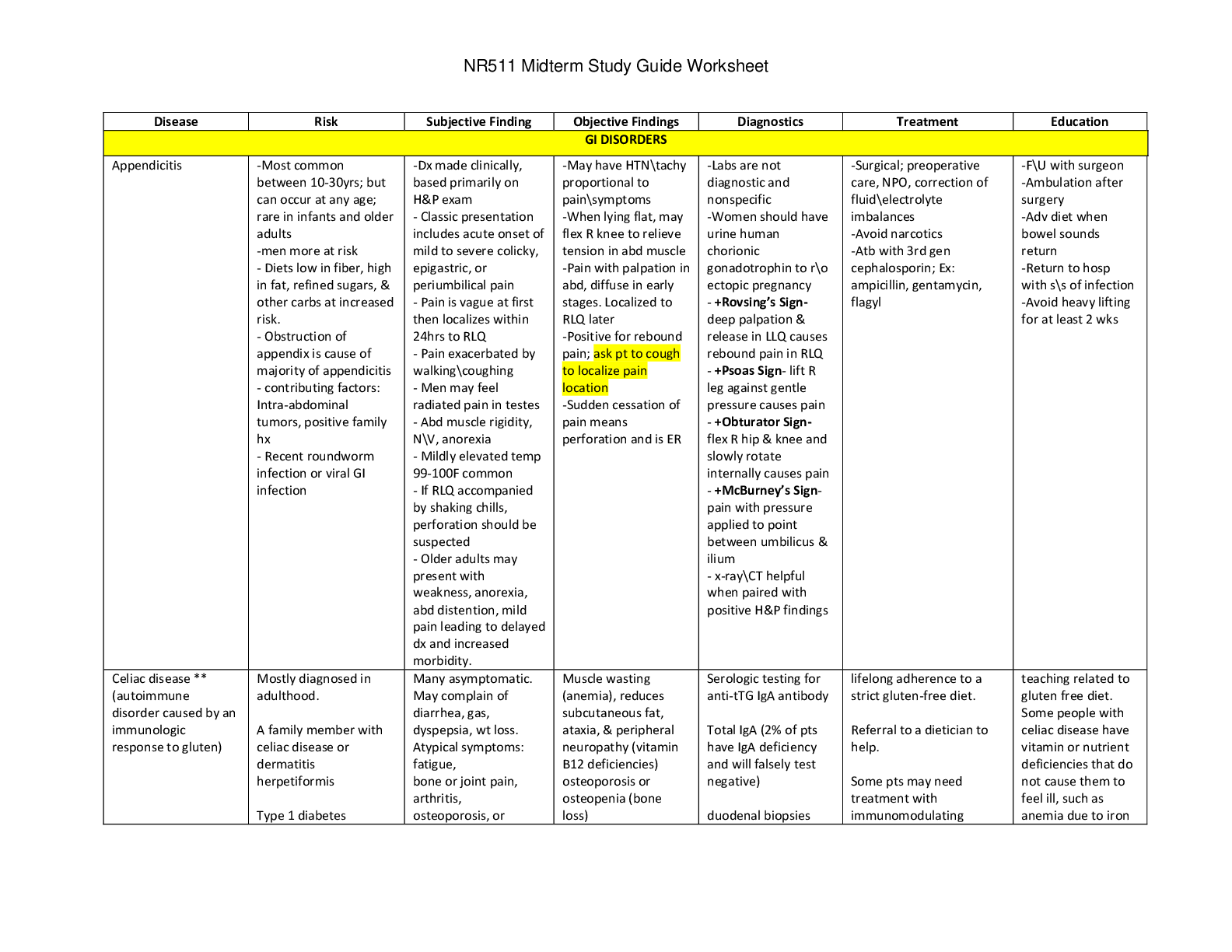
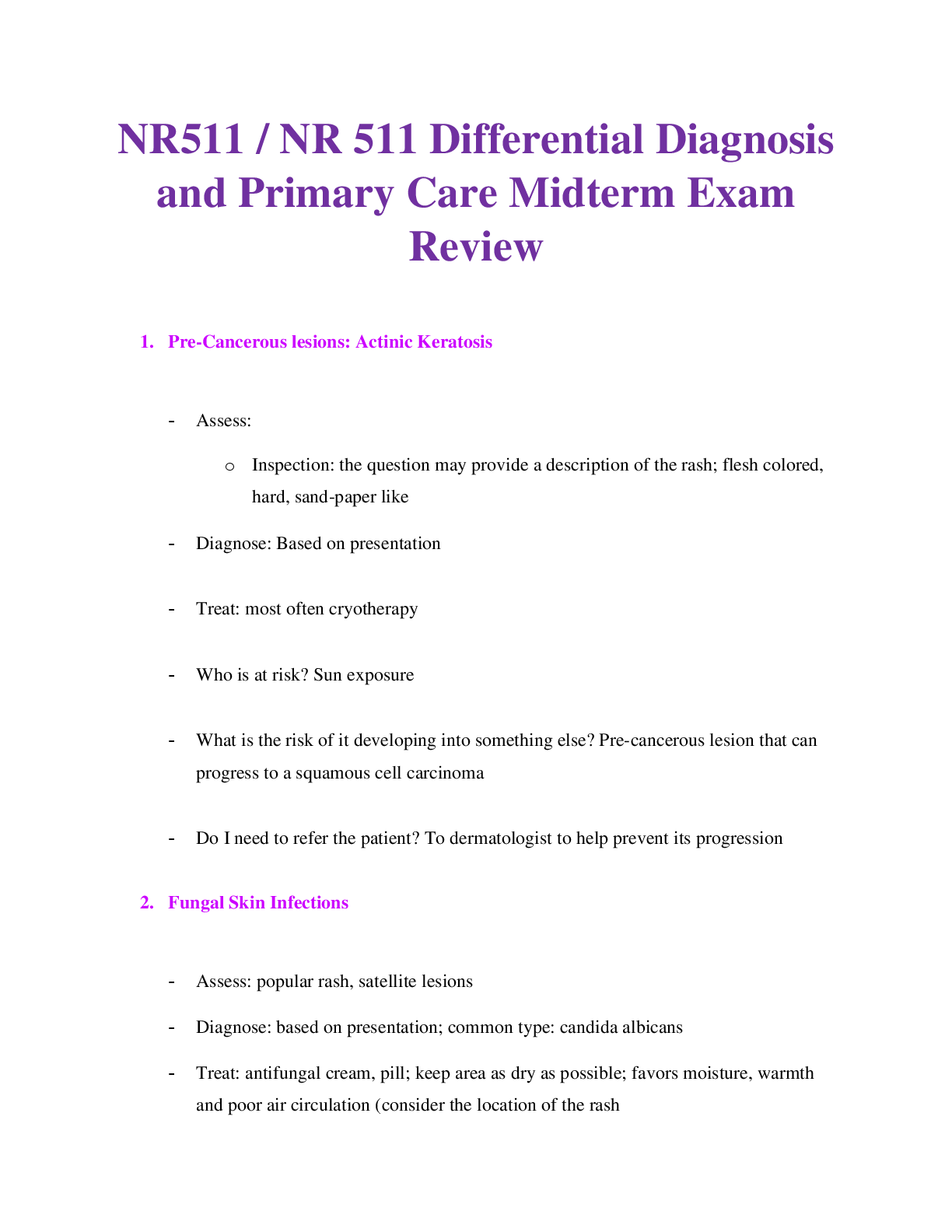
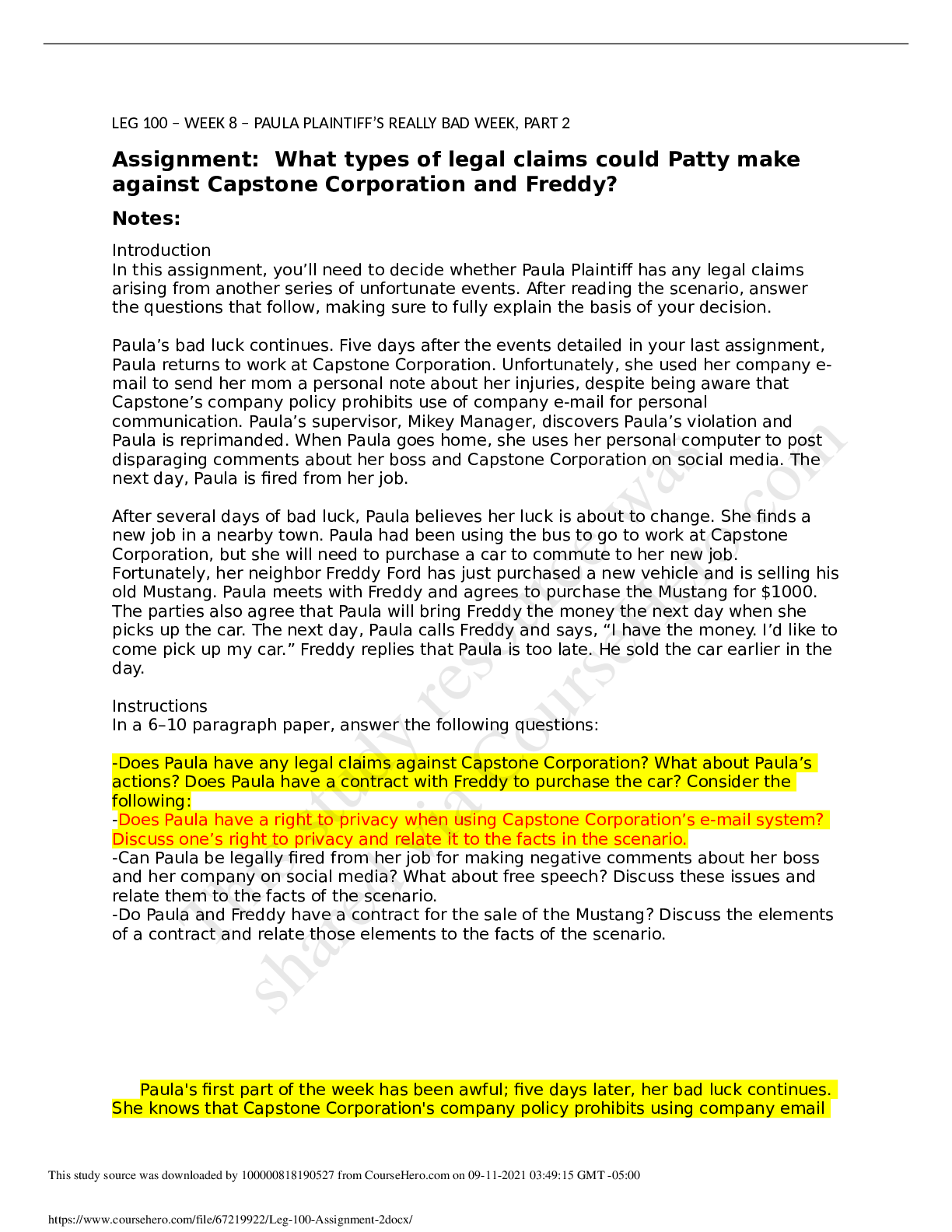

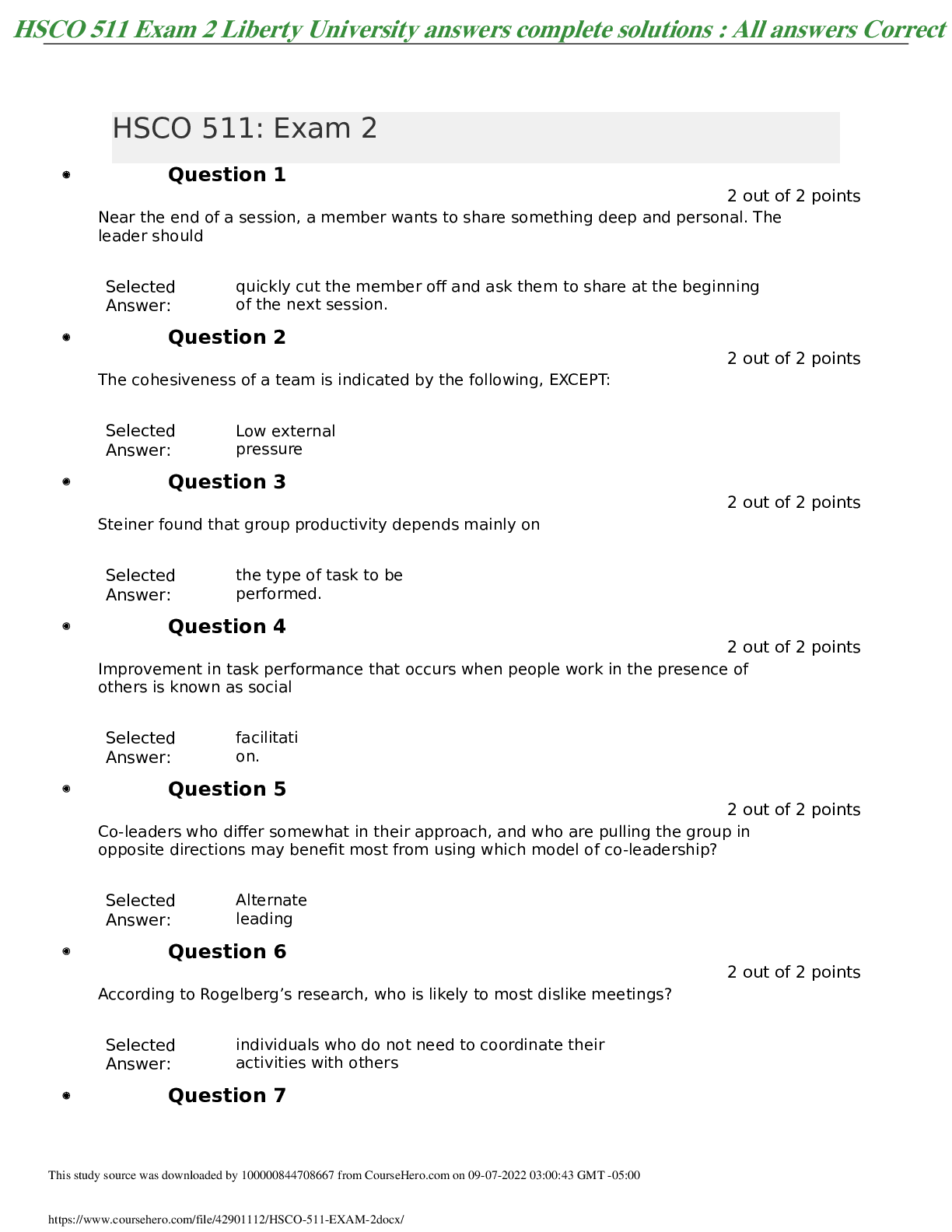

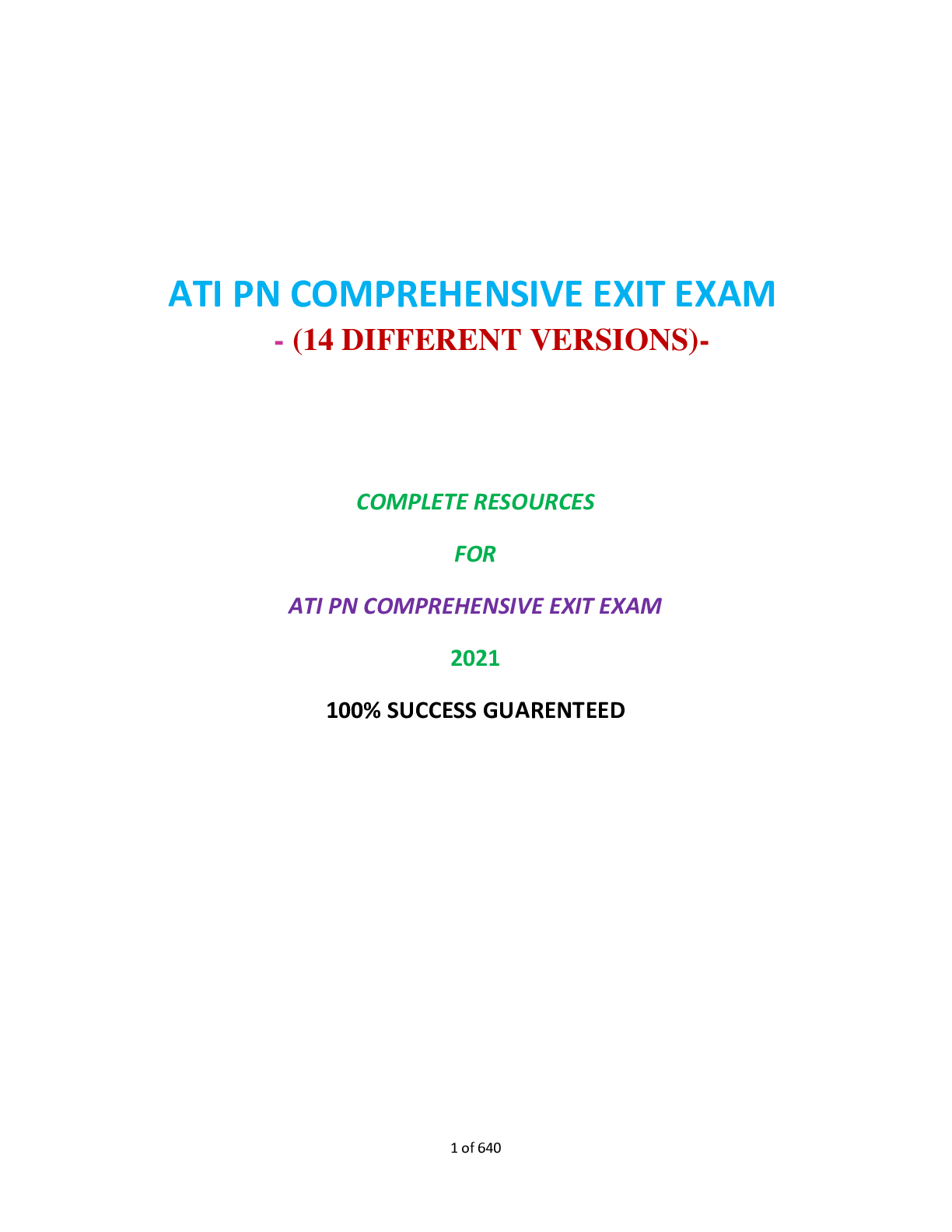
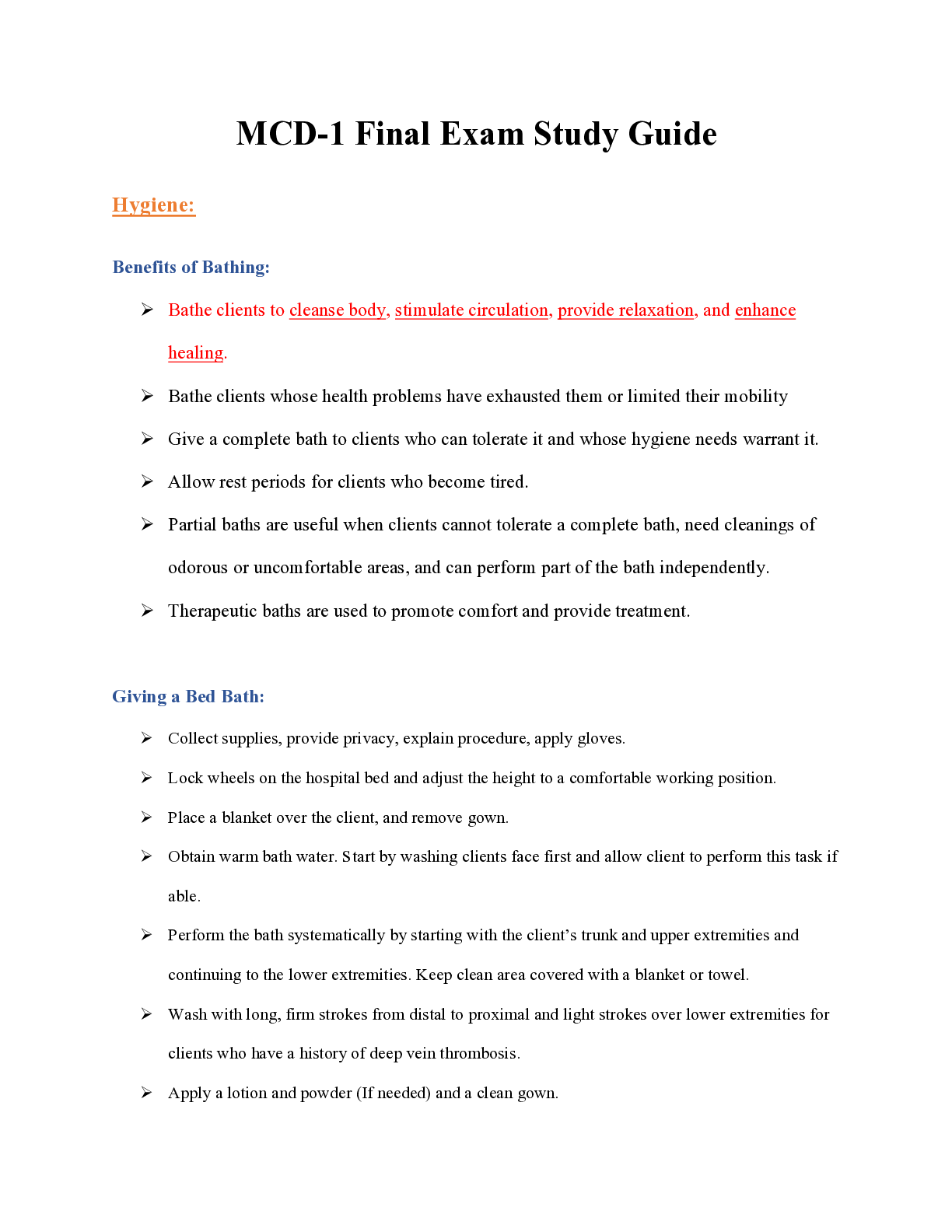



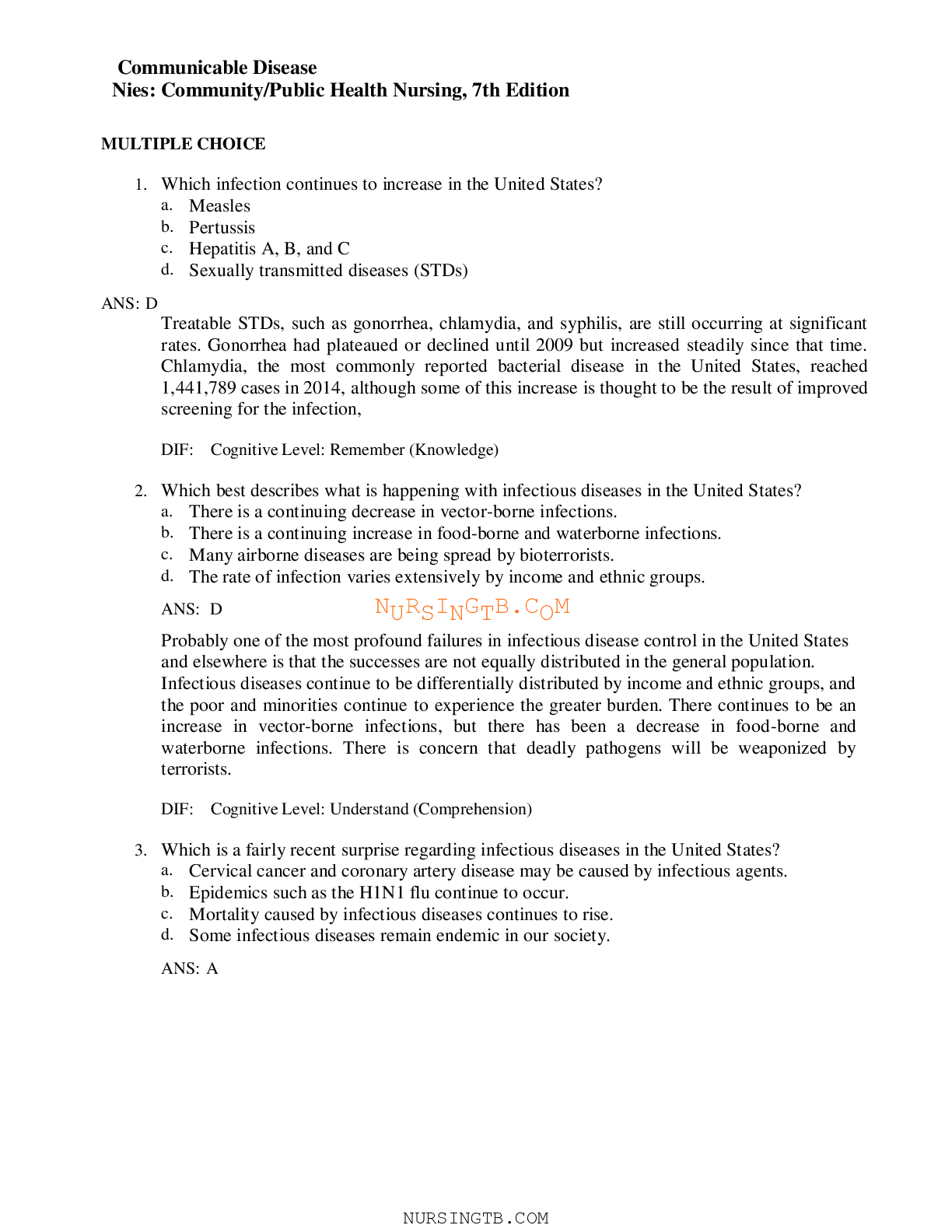
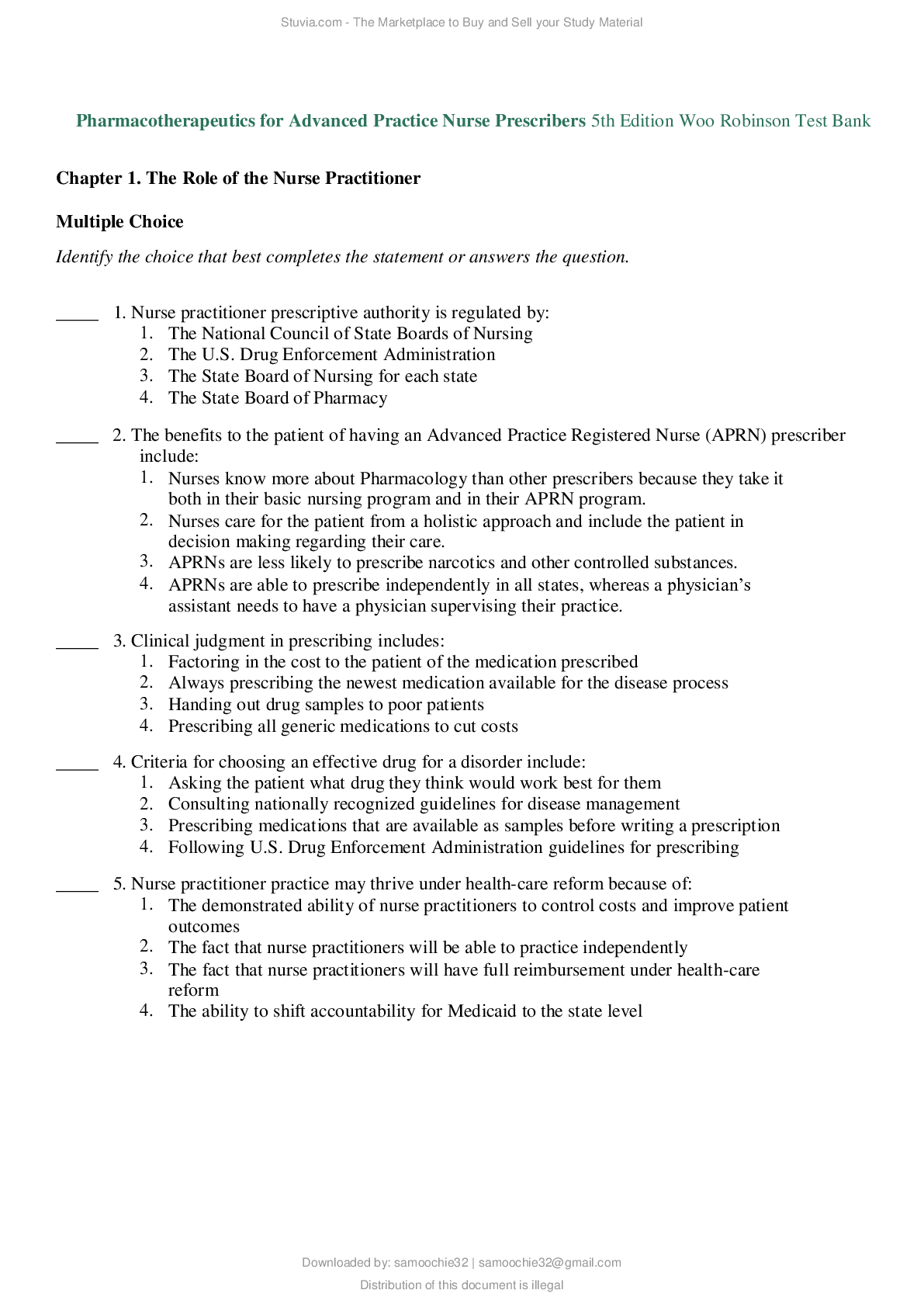

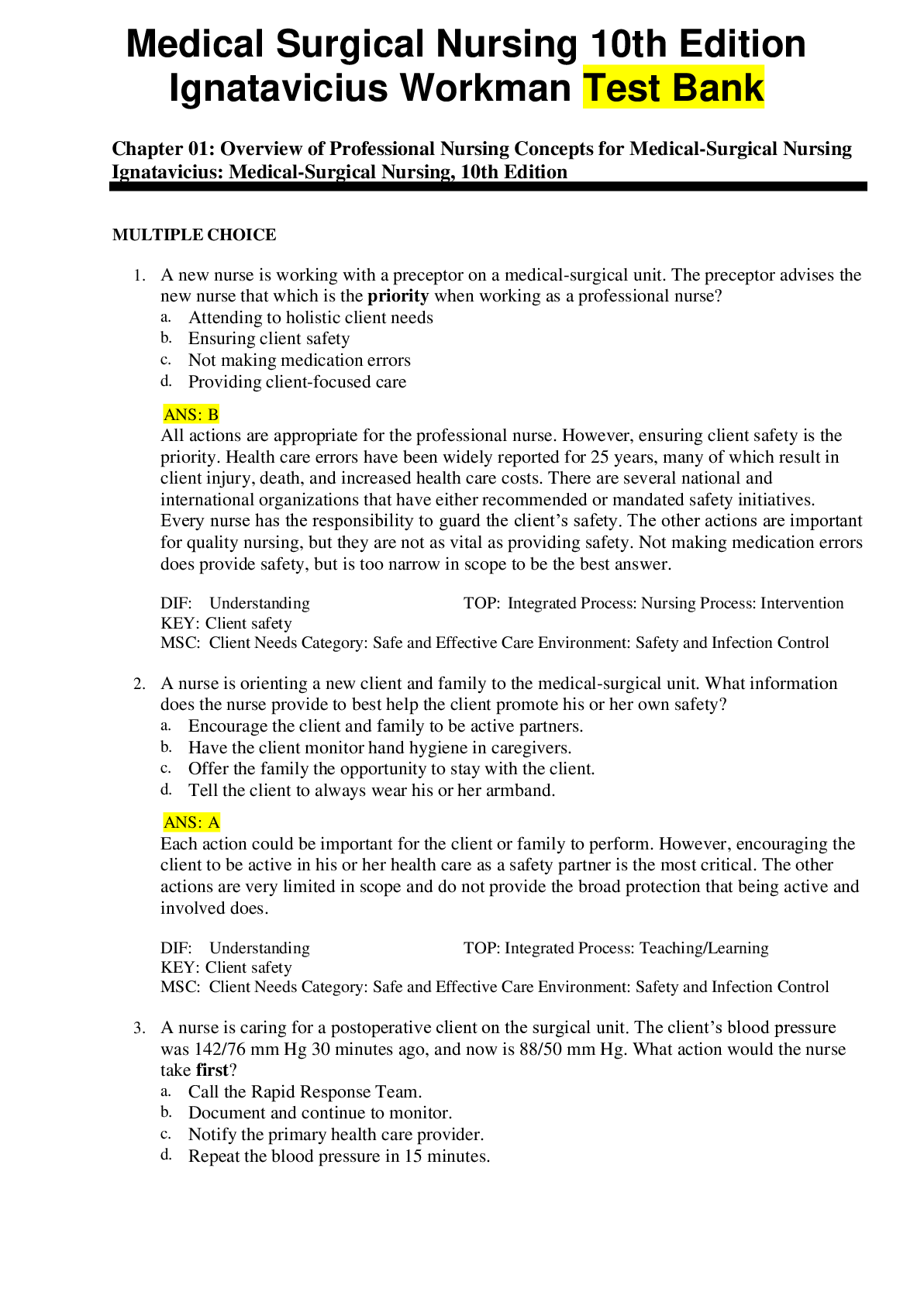
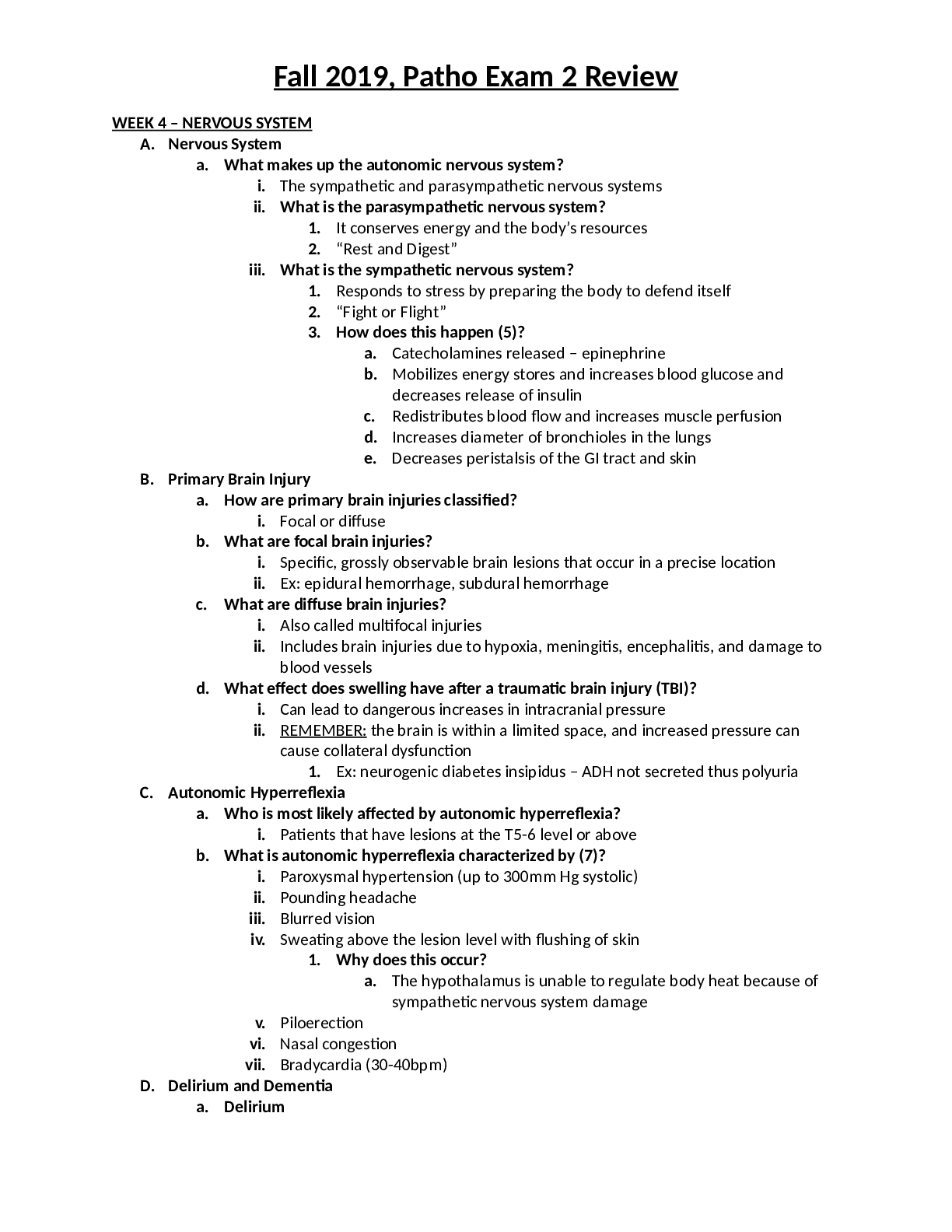
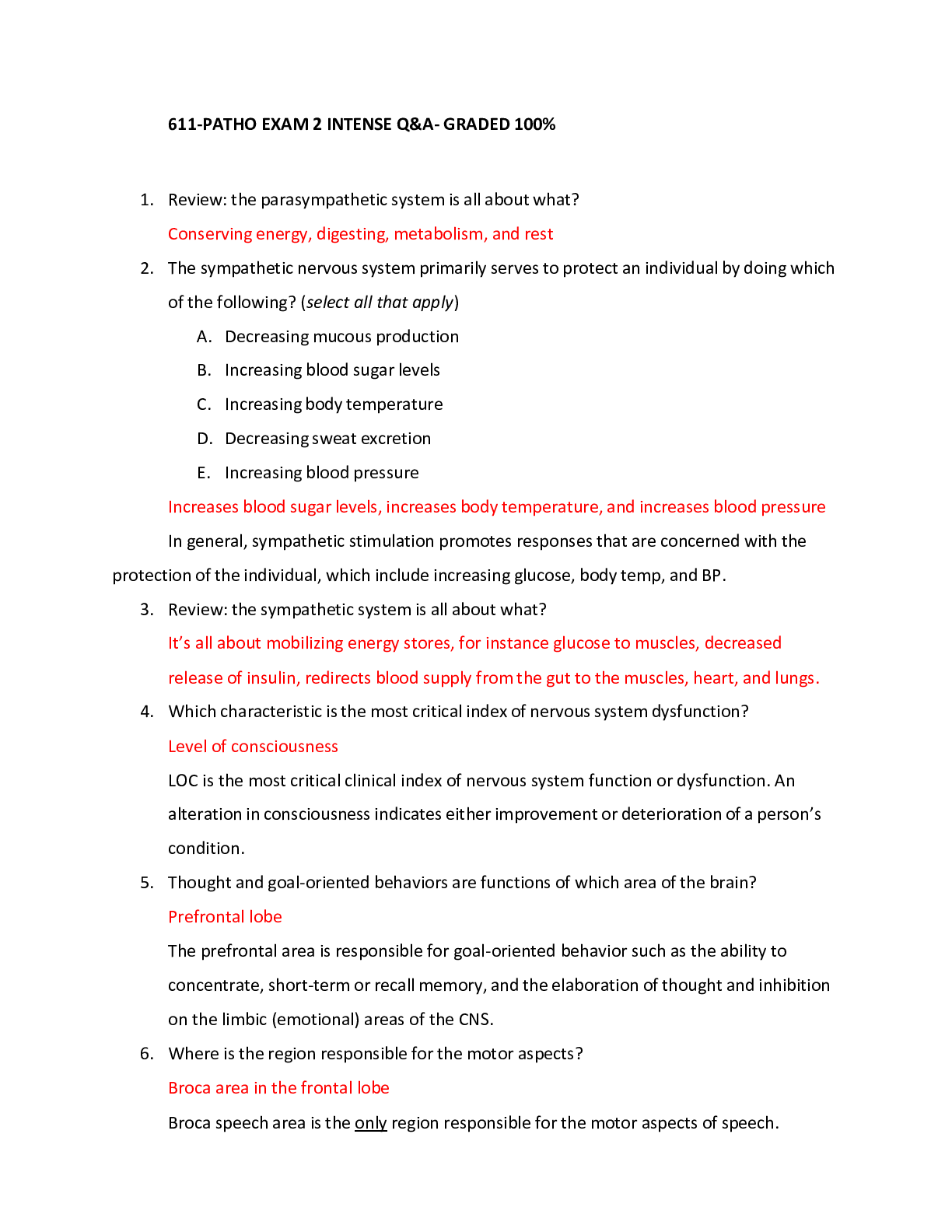
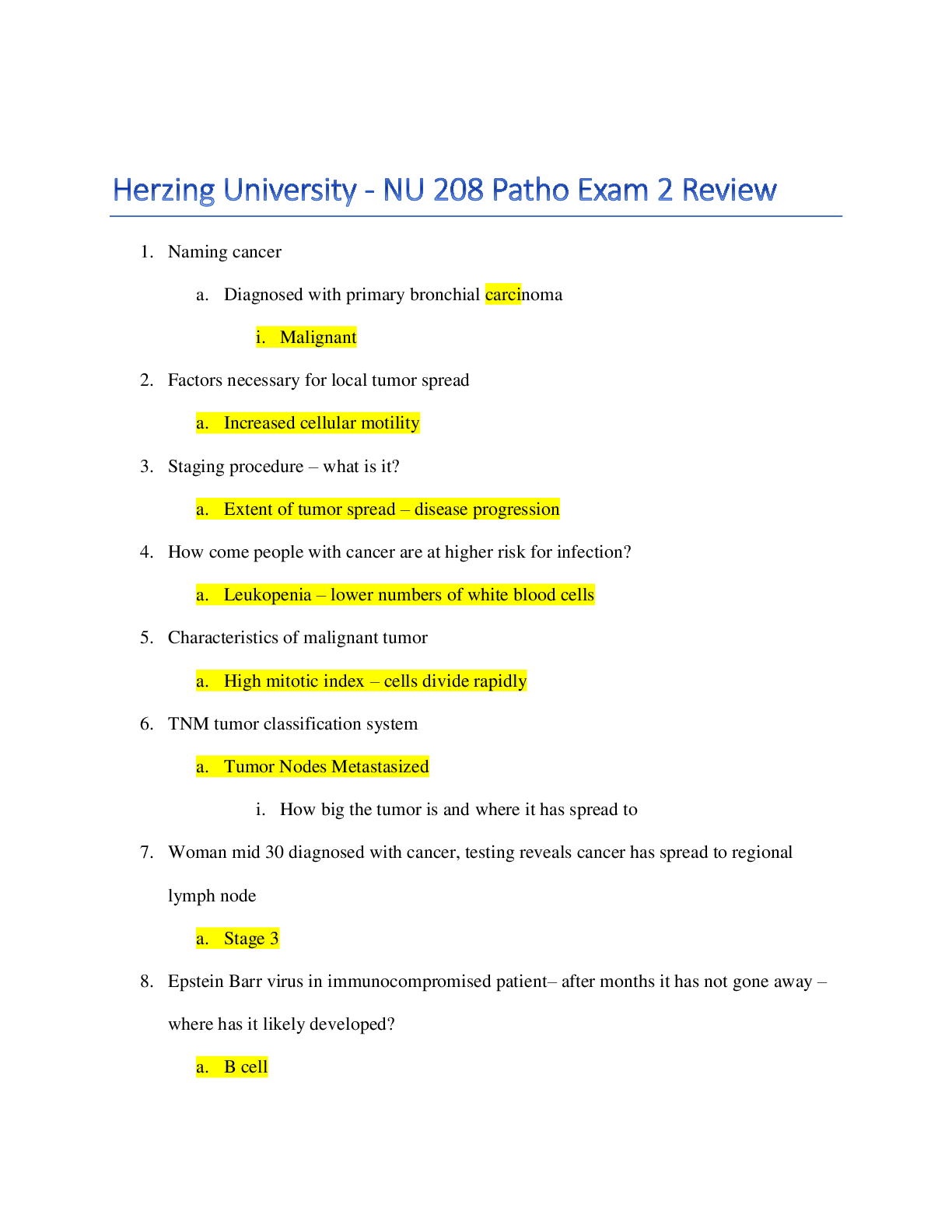



.png)

.png)




.png)
.png)

.png)




